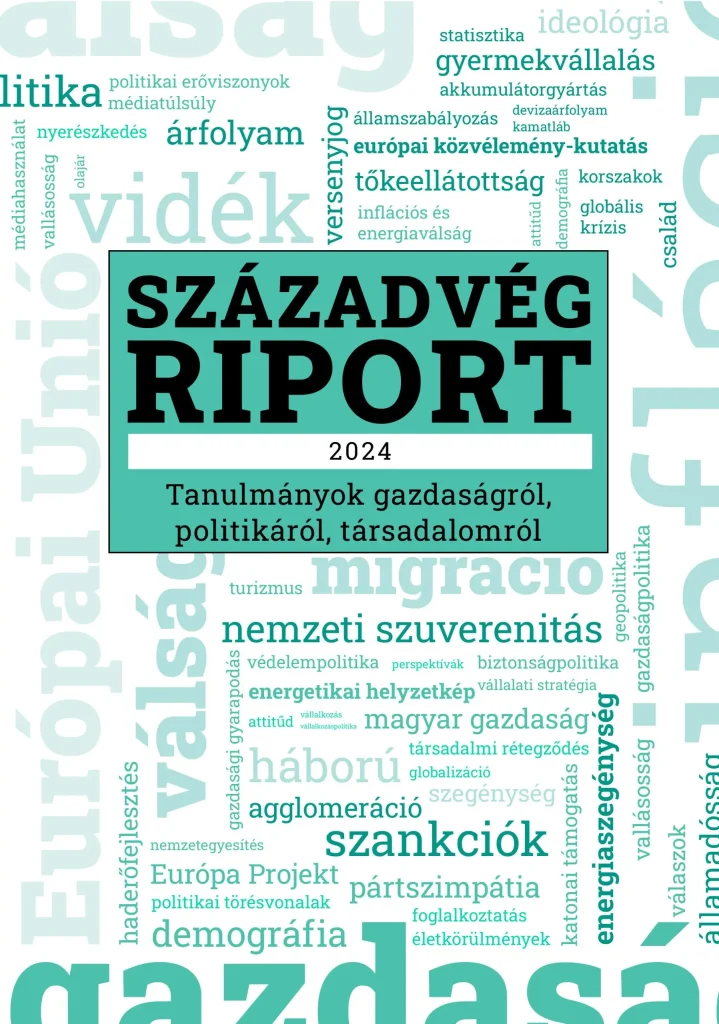Several factors could affect Hungary’s economic performance in the coming period. As for international markets, we forecast slow growth in the euro area, which may support Hungarian exports to a limited extent. This year’s disinflation is likely to continue, which could support consumption growth, especially from 2024 onwards. The remaining uncertainty caused by the Russia-Ukraine war is a downside risk.
Looking at domestic inflation trends, consumer prices rose by 14.6% in 2022. Inflation peaked at the beginning of this year, so the year-on-year inflation rate declined steadily over the previous months, falling below 10% as early as October. Given the declining inflation trend, we estimate
the average inflation rate to be 17.7% in 2023, 5.9% in 2024 and 3.7% in 2025.
Overall, we have revised down our expectations from our previous forecast.
This year the Magyar Nemzeti Bank has committed to lowering the policy rate: In September 2023, the policy rate reached the level of the base rate, which the central bank has since cut in several steps. We expect a gradual easing of monetary policy in the coming years, with inflation returning to the central bank’s target range of 3±1% in 2025.
We expect the economy to contract by 0.7% this year, more than previously forecast. The main reason for this is the fall in domestic demand: In Q3 2023, consumption fell by 2.1% and investment by 15.6%. Overall, in 2023, consumption could fall by 2.0% and investment by 12.1%. Consumption growth could be slow, rising gradually from early 2024. We project consumption to grow by 2.6% in 2024 and 2.0% in 2025. For investment, we expect a faster rebound from Q2 2024. We expect investment to grow by 8.1% in 2024 and 3.2% in 2025. Government spending is expected to grow at a more moderate pace of around 2.0% this year, followed by 2.6% in 2024 and 2.5% in 2025.
In 2023, net exports could hold back economic growth. We estimate that exports could rise by 0.5% this year on an annual basis, while imports could fall by 3.9%. We expect exports and imports to rise in the coming years. Exports could grow by 2.8% in 2024 and 7.4% in 2025, as the EU output gap closes slowly. In addition, import performance could increase by 4.5% and 6.7% over the next two years.
Overall, net exports are expected to turn positive only in 2025.
The domestic labour market is also changing. In the past year, not only employment has expanded, but unemployment has also risen slightly (by 0.3 percentage points), with unemployment projected to reach 3.9% in 2023. This year has seen burdens on households rise, mainly due to an increase in overall price levels. This process is encouraging more previously inactive households to re-enter the labour market. This year’s trend shows that nearly half of those entering the labour market are able to find a job within a short time, while the other half are slower to find a job. We forecast that the changes observed this year will continue next year, with employment continuing to expand and unemployment rising, the latter to 4.2%, and the market returning to its previous state by 2025, when the unemployment rate will fall back to 4.0% while employment remains high.
After examining the revenue and expenditure appropriations in the 2023 budget and their projected annual outturns, our forecast projects an ESA deficit of 5.4% by the end of the year, 0.2 percentage points higher than the revised deficit-to-GDP ratio of 5.2%. We expect the cash deficit to be more favourable at 5.1%.
We forecast that by the end of the year, gross government debt as a share of GDP will fall to 71.7%.
The deficit target of 2.9% set in the 2024 Budget Act has been exceeded by now, due to significant deviations from the detailed targets of the Budget Act, in particular in view of the evolution of VAT revenues, budgetary bodies and chapter-administrated appropriations this year, as well as recent developments regarding EU programmes. The 2024 budget deficit is projected to reach 4.0% of GDP without revising the budget plans, so we expect the 2024 Budget Act to be amended.
| 2022 | 2023 | 2024 | 2025 | |
| Gross domestic product (volume index) | 4.6 | -0.7 | 2.7 | 3.1 |
| Household final consumption expenditure (volume index) | 5.8 | -2.0 | 2.6 | 2.0 |
| Gross fixed capital formation (volume index) | 2.2 | -12.1 | 8.1 | 3.2 |
| Export volume index (based on national accounts) | 11.8 | 0.5 | 2.8 | 7.4 |
| Import volume index (based on national accounts) | 11.1 | -3.9 | 4.5 | 6.7 |
| Balance of international trade in goods (EUR billion) |
-15.2 | -10.4 | -13.9 | -13.0 |
| Consumer price index (%) | 14.6 | 17.7 | 5.9 | 3.7 |
| Central bank base interest rate at the end of the period (%) | 13.0 | 12.1 | 9.7 | 6.9 |
| Unemployment rate (%) | 3.6 | 3.9 | 4.2 | 4.0 |
| Current account balance as a percentage of GDP | -8.2 | -4.8 | -6.5 | -6.2 |
| Net lending as a percentage of the GDP | -6.0 | -2.6 | -4.4 | -4.1 |
| ESA balance of public finances as a percentage of GDP | -6.2 | -5.4 | -4.0 | -1.8 |
| Government debt-to-GDP ratio | 73.3 | 71.7 | 71.2 | 69.7 |
Remark: The base rate of the central bank applies to the last quarter of the year.
